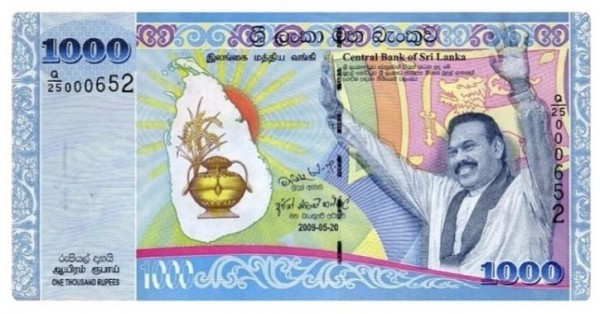Sri Lanka is in the middle of its biggest political and economic crisis since the bloody civil war which ended 13 years ago. Street protests have involved thousands of people, and focused on rampant inflation and cuts in basic public services. The government of President Gotabaya Rajapaksa is clearly rattled, with an unprecedented mass resignation of cabinet ministers last week stunning the country, amid strident calls for new elections.
The political turmoil is derailing Sri Lanka’s ability to attract foreign finance and to keep the local economy at least ticking over. Its reliance on tourists has been hit very hard by the Covid pandemic, and riots on the streets has done little to attract tourism.
How did the current crisis begin ?
President Gotabaya Rajapaksa ran on a populist platform which included widespread tax cuts, which he pushed just a few weeks before Covid hit the country. The immediate result was a drop in government revenues at a point where increased spending was needed. It’s just one item on a long list of economic mismanagement, which last year included banning agricultural fertilisers. The vision of an organic farming sector in Sri Lanka led to massive farmer protests, and food shortages as crops failed. Rajapaksa thought his tax cuts would stimulate the economy – but instead his government was forced to borrow offshore from China and elsewhere.
Remittances from overseas Sri Lankan workers have also decreased as many lost their jobs, adding to the falling foreign-exchange earnings. Sri Lanka has struggled to manage its external debt, which had grown in part due to loans from China to fund ambitious infrastructure projects. The country is still struggling to pay for imports of fuel and essential food items like oil and rice.
What’s happening to the economy?
Sri Lanka’s $81 billion economy is staggering, not helped by rising oil prices and record inflation putting many items out of reach of ordinary people, and making other items impossible to find. The authorities have raised interest rates, and placed curbs on non-essential imports. Consumer prices rose nearly 19% in March and the financial constriction is now affecting all parts of Sri Lankan society.
While once the Sri Lankan middle class held tight and hoped through the hard times, now business owners are seeing their savings disappear amid fuel shortages and power cuts that make it near impossible to run a business. The latest bungle involved floating the Sri Lankan rupee, which saw the local currency plummet against the dollar. For many Sri Lankans this was the last straw, and the Sri Lankan rupee is currently among the weakest currencies in the world.
Why are people protesting?
Sri Lankans, who elected Rajapaksa to the presidency three years ago, are now demanding he step down. On March 31st protesters fought with police outside Rajapaksa’s private home after a crowd surged past the barricades, screaming for him to resign. While the government has established a panel of economic experts to solve the crisis, it faces what commentators describe as a “disorderly default”, where social unrest mixes with economic failure. Possible talks with the IMF also fan public concerns some sort of "austerity" measures may be attached to forthcoming loans.
How has the government responded?
Rajapaksa declared an emergency and imposed a weekend curfew earlier in the month. Social media has also been restricted for short periods in an attempt to quell public discord. But thousands of Sri Lankans have taken to the streets anyway with their chant of ‘Gota Go Home”. President Rajapaksa holds significant executive powers based on a 2020 constitutional amendment, but the opposition has now demanded those powers be removed and Rajapaksa resign His brother Mahinda is Sri Lankan Prime Minister, and he has previously handed three other Rajapaksa family members key positions in his cabinet, including the finance, agriculture and sports portfolios.

The Sri Lankan rupee, now one of the weakest currencies in the world.
Protestors are now demanding the removal of the entire Rajapaksa family from the nation’s politics. Gota Rajapaksa’s political party no longer has a majority in Parliament, his cabinet has now all but gone, and his political isolation is worsened by the resignation of senior public servants like central Bank Governor Ajith Cabraal.
What’s the big picture with Sri Lanka?
Sri Lanka has suffered with political violence ever since independence in 1948. Civil conflict between the Sinhalese-dominated government and the separatist Liberation Tigers of Tamil Elam killed around 100,000 people and stumbled on for decades before a bloody government victory in 2009. There was then a decade-long cessation in major violence until the Easter Sunday suicide bombing attacks, which killed more than 200 people in churches and hotels in the capital Colombo. The atrocity was eventually blamed on a fringe Islamic organisation called NTJ (National Thowheeth Jama’ah), suspected to have ties to ISIS.
Gota Rajapaksa, the former military officer who played heavily on his role in the civil war, was elected President a few months after the trail of the bombers. Rajapaksa and his family now have significant control over the government, and amid accusations of nepotism and corruption they reside over a worsening economic crisis which has seen the country reach out to both India and China for loans.
The government is also due to speak to the IMF about the possibility of loans, no doubt those will come with some awkward strings attached around government austerity, when most Sri Lankans are just struggling to survive. Before any talks are had though, the country needs a new Finance Minister following the resignation of the last one – Basil Rajapaksa.
While many had seen the Rajapaksa family as national saviors for winning the war against the Tamils, the new reality of ongoing government economic and political incompetence has Sri Lanka in a very dangerous place.
- Asia Media Centre